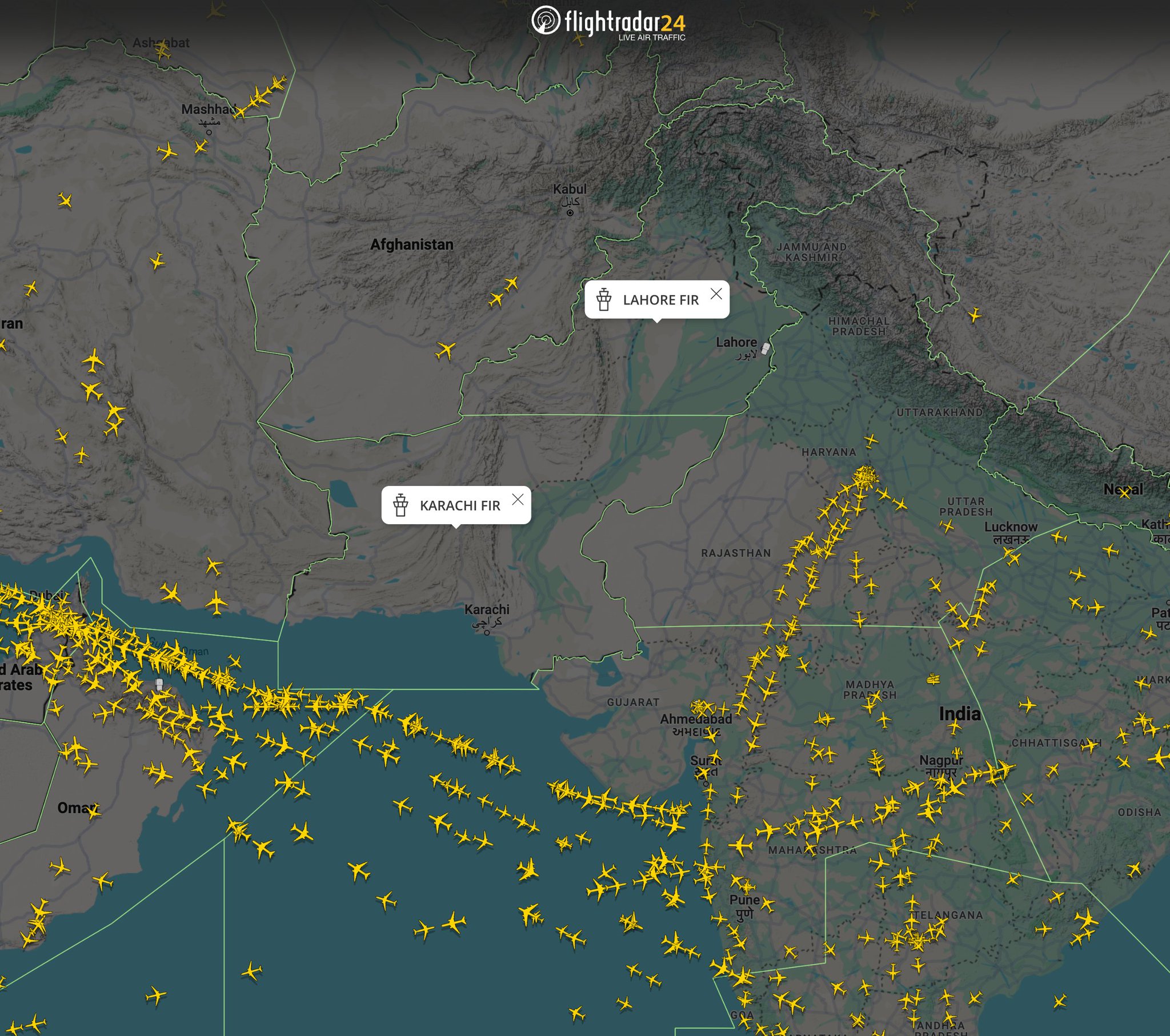Update: 10th May 2025: Pakistan announced on Saturday that it was opening its airspace for all kinds of traffic, shortly after the announcement of a ceasefire with India.
Pakistan Airports Authority (PAA) made the announcement as apparently normalcy returns to the country after the raging tension with India seems to be ending.
“All airports in the country are available for normal flight operations. Passengers are requested to contact the relevant airline for the latest schedule of their flights,” the PAA said.
It also said that Pakistan’s airspace has been fully restored for all types of flights, and all airports in the country are available for normal flight operations.
============================================================================================================================
Tensions between India and Pakistan have disrupted air travel across South and Central Asia, with reverberations felt as far as Europe and East Asia. After Pakistan closed its airspace to Indian airlines in late April, India banned Pakistani airlines soon after.
This alarming situation has forced many airlines to change their flight paths, leading to longer routes, fuel stops, delays, and cancellations.
Indian carriers like Air India and IndiGo, as well as international airlines including British Airways, Air France, and United, have been directly affected. The situation is still developing, and airlines are continuing to adjust their operations day by day.
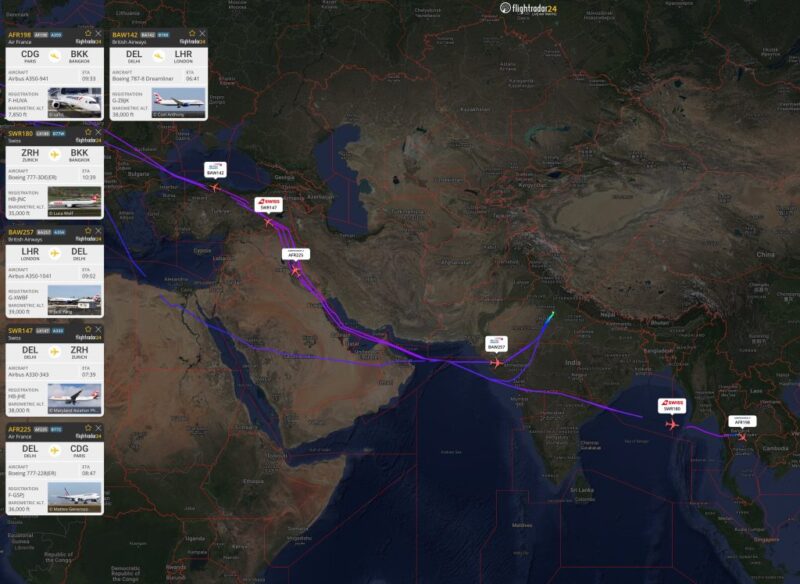
Indian Airlines: Delays, Detours, Disruption
The biggest operational burden has fallen on Indian carriers, especially those serving long-haul routes. Air India has been forced to reroute most of its transatlantic and European flights, which were previously routed over Pakistan and Central Asia. Instead, these flights now fly south over the Arabian Sea and the Middle East before re-entering northern latitudes.
Moreover, some of Air India’s flights to North American destinations are making fuel stops at Vienna and Copenhagen. These detours not only extend flight times significantly but also complicate crew scheduling and increase costs at a time when the airline is aggressively expanding its international footprint under the Tata Group.
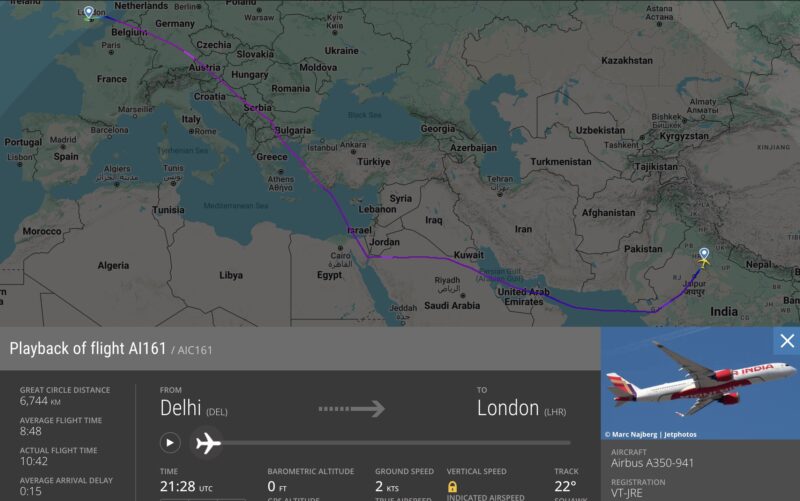
IndiGo, India’s largest airline by market share, has also been caught in the turbulence, particularly on its Central Asia routes. What was once a straightforward 2-hour and 20-minute hop between Tashkent and Delhi now takes over 5 hours via Turkmenistan and Iran.
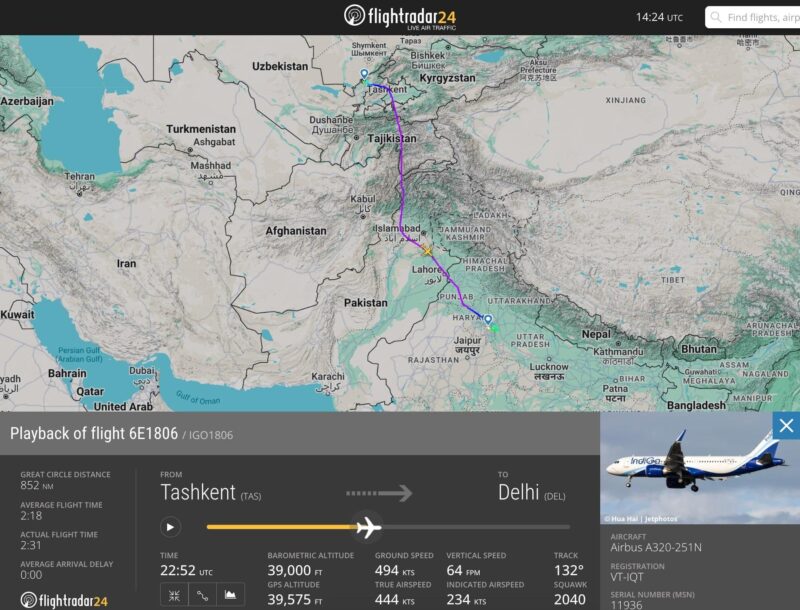
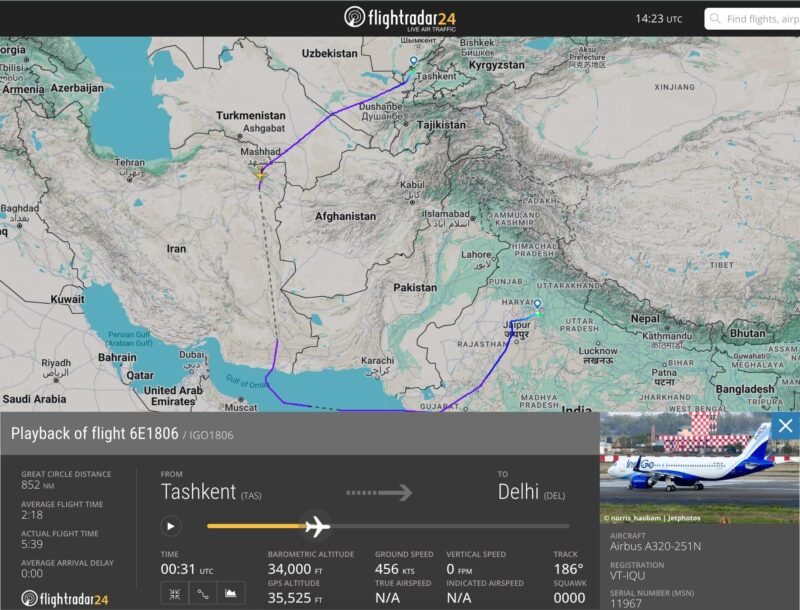
Similar rerouting affects its Almaty service, where flight times have nearly doubled. IndiGo alone canceled 165 flights in the days following the Indian strike.
Other notable Indian carriers, including SpiceJet and Akasa Air, joined IndiGo in cancelling domestic and short-haul international flights. Adding to the woes, around 24 Indian airports have been temporarily shuttered as a security precaution by the Directorate General of Civil Aviation (DGCA).
Pakistan International Airlines: Cut Off and Delayed
Pakistan International Airlines (PIA), already struggling with years of financial instability and safety oversight issues, is now dealing with prolonged flight times and mounting costs. The airline’s key Southeast Asian routes from Islamabad and Lahore to Kuala Lumpur have been heavily impacted.
Before April’s airspace ban, flight PK894 (Islamabad–Kuala Lumpur) took roughly 5 hours and 40 minutes. Now, it’s averaging more than 8 hours, with some flights clocking in at nearly 8 hours and 20 minutes. Similarly, flight PK898 from Lahore now takes close to 9 hours, compared to under 5 and a half previously.
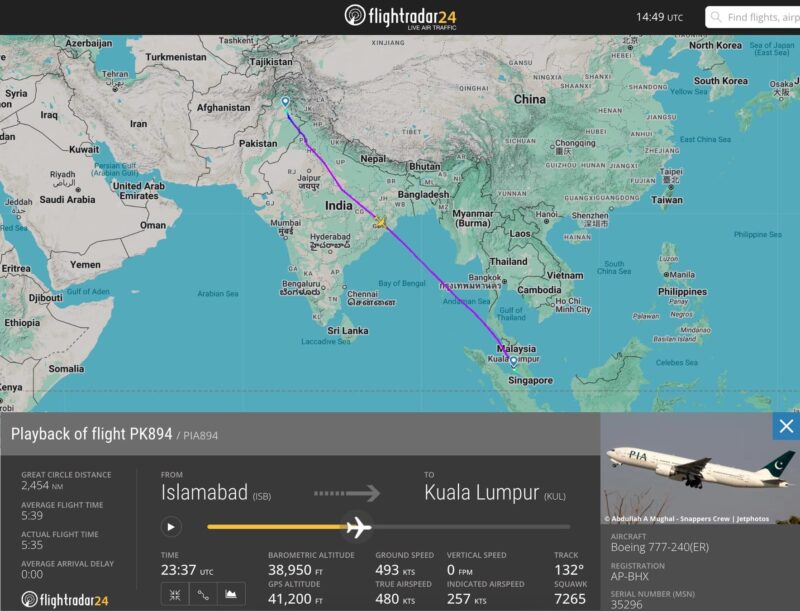

While Pakistan had initially announced its airspace is technically open, in practice, reciprocal bans and safety concerns kept many aircraft away. However, as of May 10, the Pakistani airspace is now closed to all traffic.
According to Pakistani authorities, 57 international flights were inside their airspace at the time of India’s May 7 attacks. Moreover, concerns have also been raised about GPS spoofing and electronic interference, adding another layer of complexity.
Impacts on Global Carriers
The India–Pakistan standoff has extended far beyond regional carriers. European and East Asian airlines have been avoiding Pakistani airspace, which has long served as an efficient corridor for flights between Europe and Asia.
British Airways flight BA257 from London to Delhi, typically a sub-eight-hour journey, now regularly exceeds 9.5 hours due to a sweeping southern diversion via Iraq and the Arabian Sea.
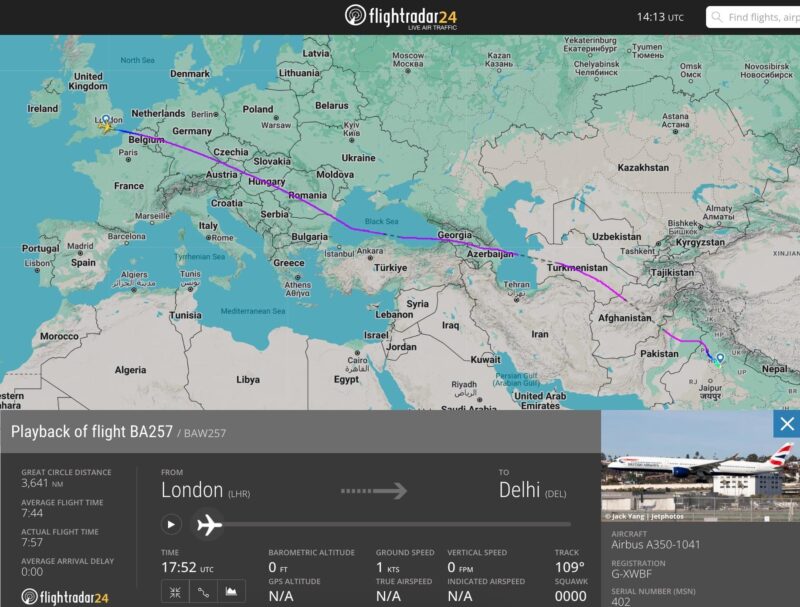
This route, operated by the Airbus A350-1000, reflects just one example of how geopolitical risks are reshaping flight planning.
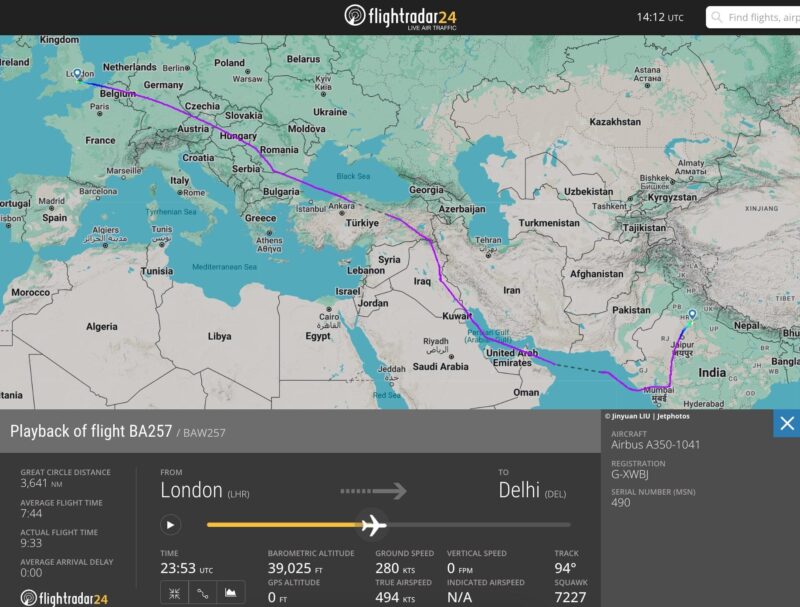
Air France’s flight to Delhi has seen flight times stretch by up to an hour on its rerouted operations. Lufthansa has confirmed it is avoiding Pakistan until further notice, and similar confirmations have come from KLM, Swiss International, and Singapore Airlines.
Moreover, United Airlines canceled its Delhi service from Newark outright, citing airspace constraints. Korean Air rerouted flights to Dubai, now avoiding Pakistani airspace entirely in favor of a more easterly track via Myanmar and Bangladesh.
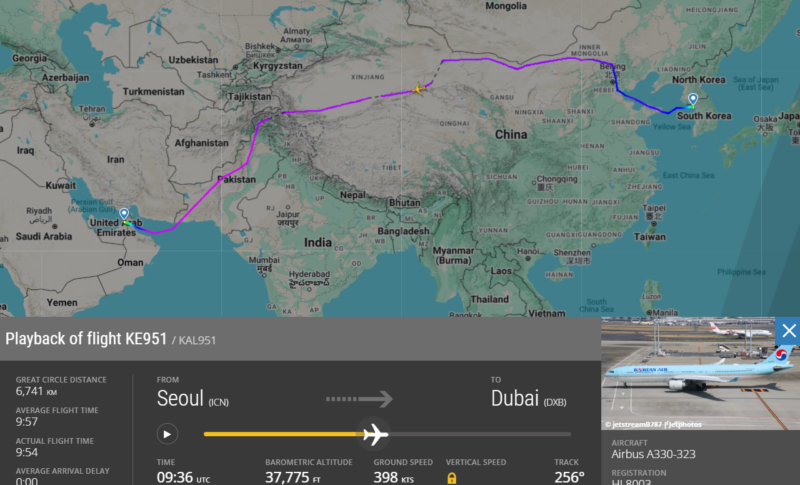
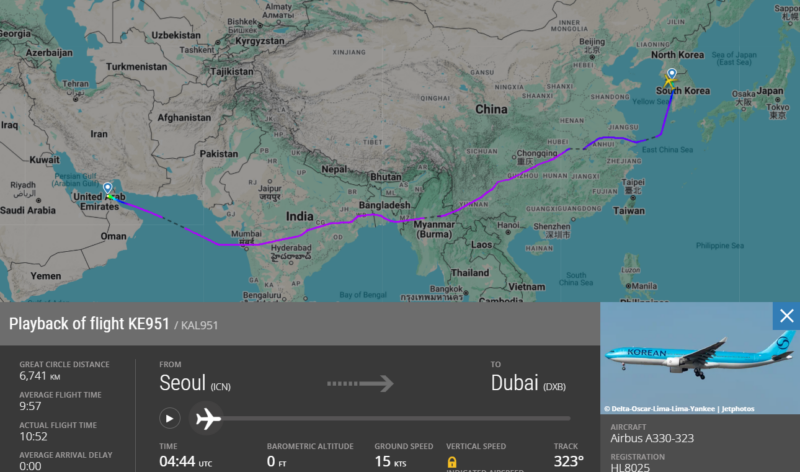
China Airlines has also rerouted its European flights, including those to Frankfurt, London, and Rome. GPS spoofing, mentioned by the Association of Asia Pacific Airlines as a growing risk, is also influencing airlines’ decisions to avoid conflict-prone regions.
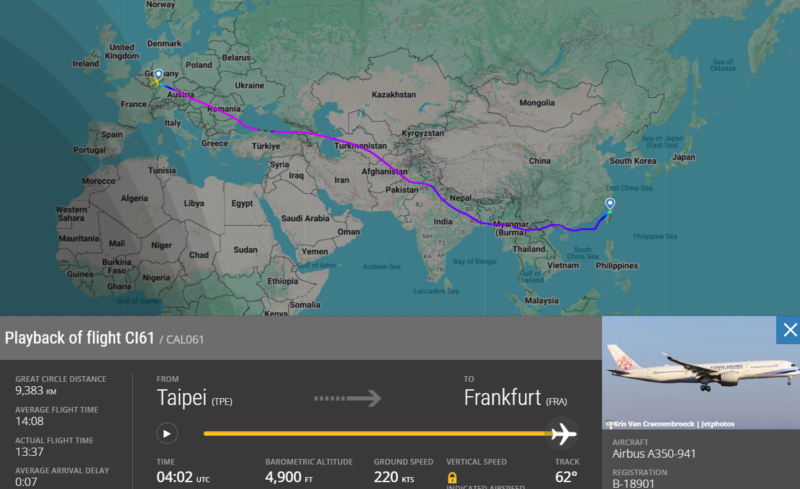
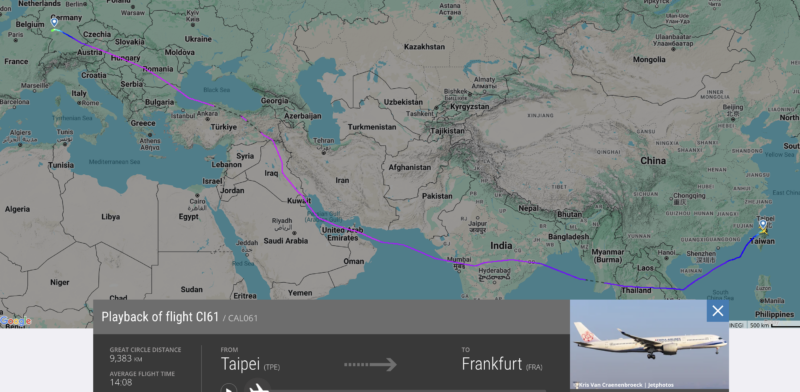
Wider Implications
With no immediate resolution in sight, airlines’ operational costs and disruptions are mounting. Additional fuel consumption, crew fatigue, slot coordination, and even regulatory compliance are being tested.
Airfares on affected routes are expected to rise as airlines eventually pass on the added operating costs to consumers.
More worryingly, as global airlines are forced to take longer routes through already congested airspace over the Arabian Peninsula and Central Asia, air traffic control infrastructure may come under pressure.
Moreover, the Middle Eastern carriers, already dealing with diversions from the Red Sea region due to ongoing hostilities in Yemen, now face additional constraints on east-west connectivity.
All Images via FlightRadar24


